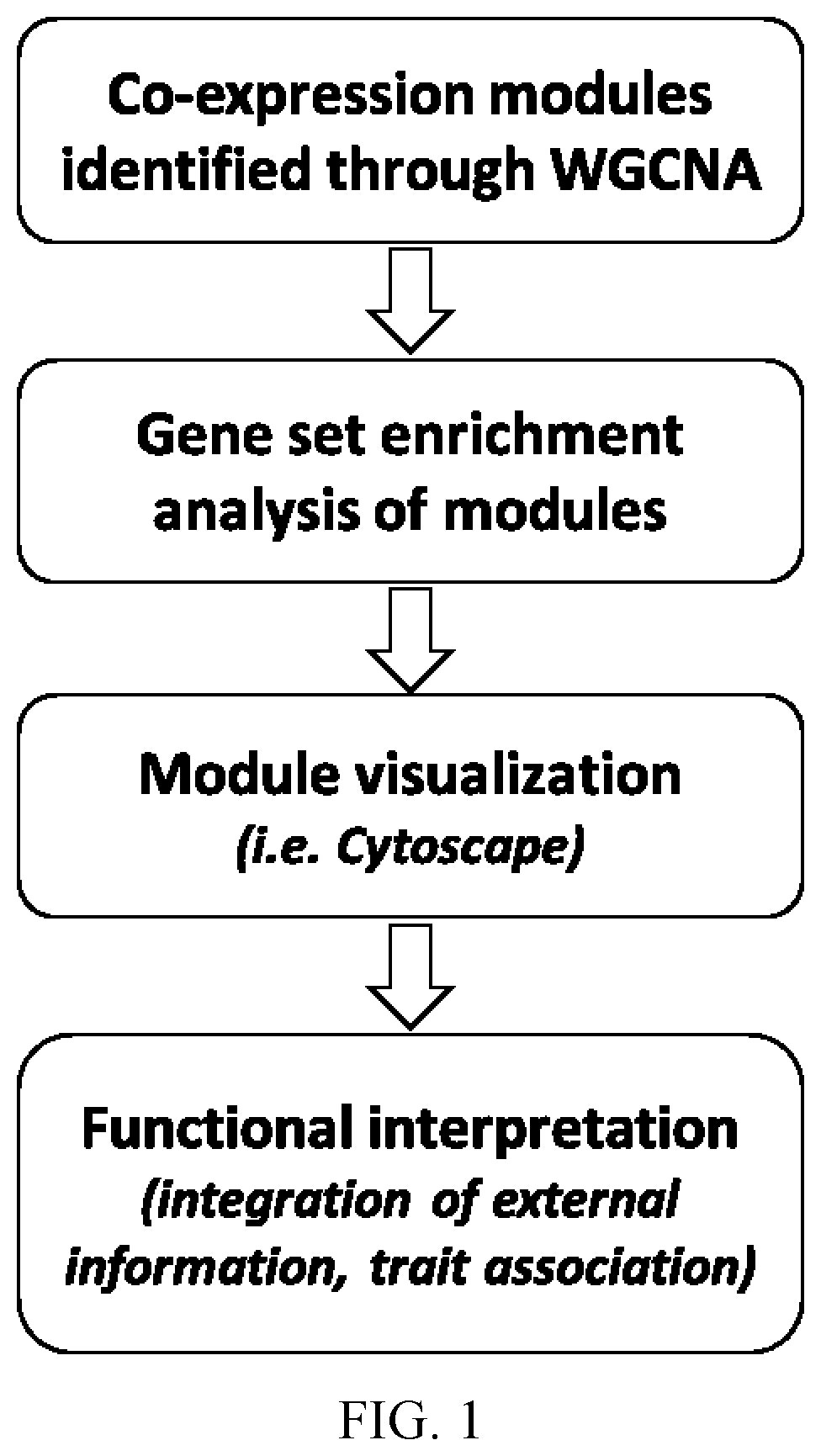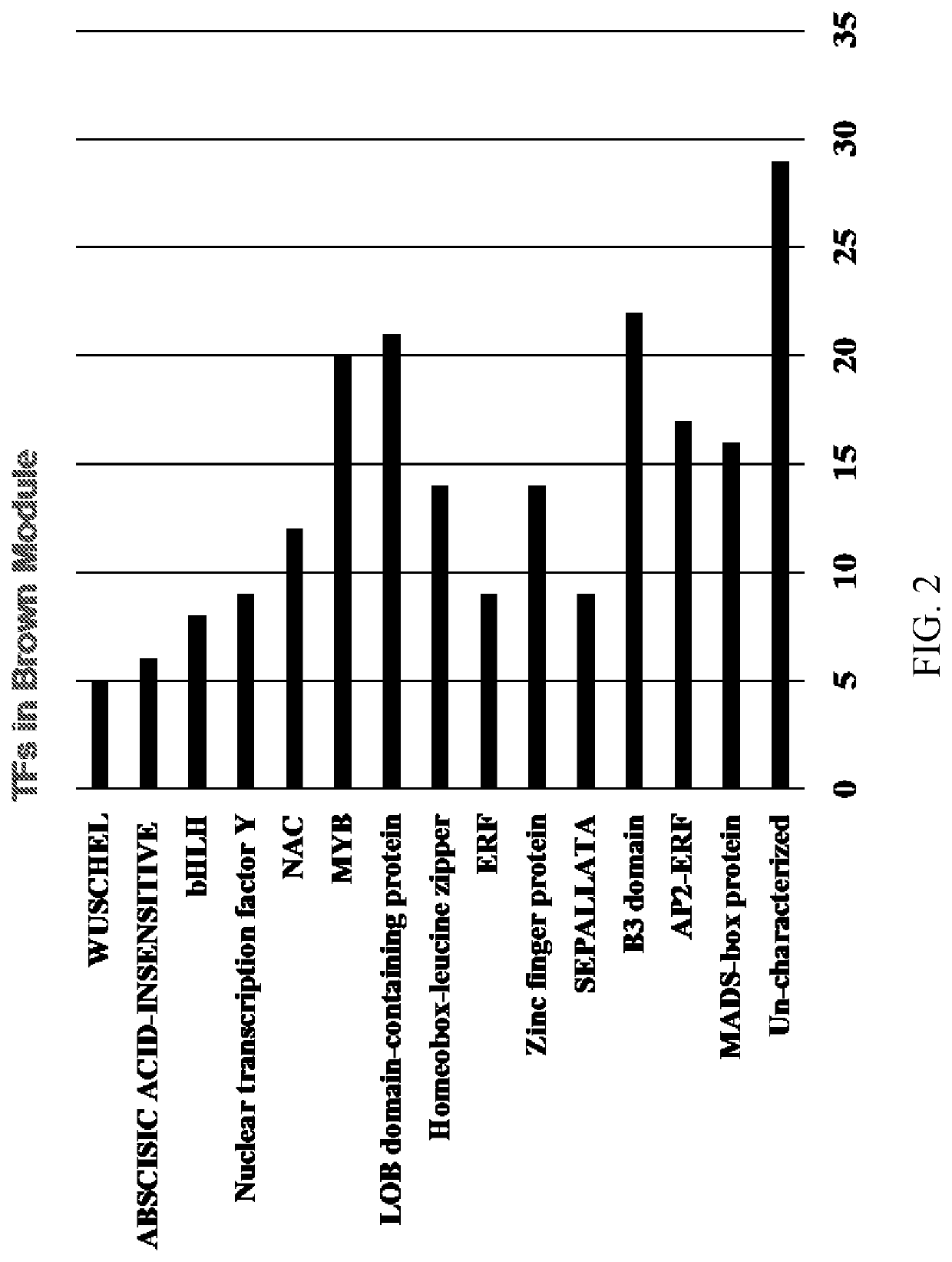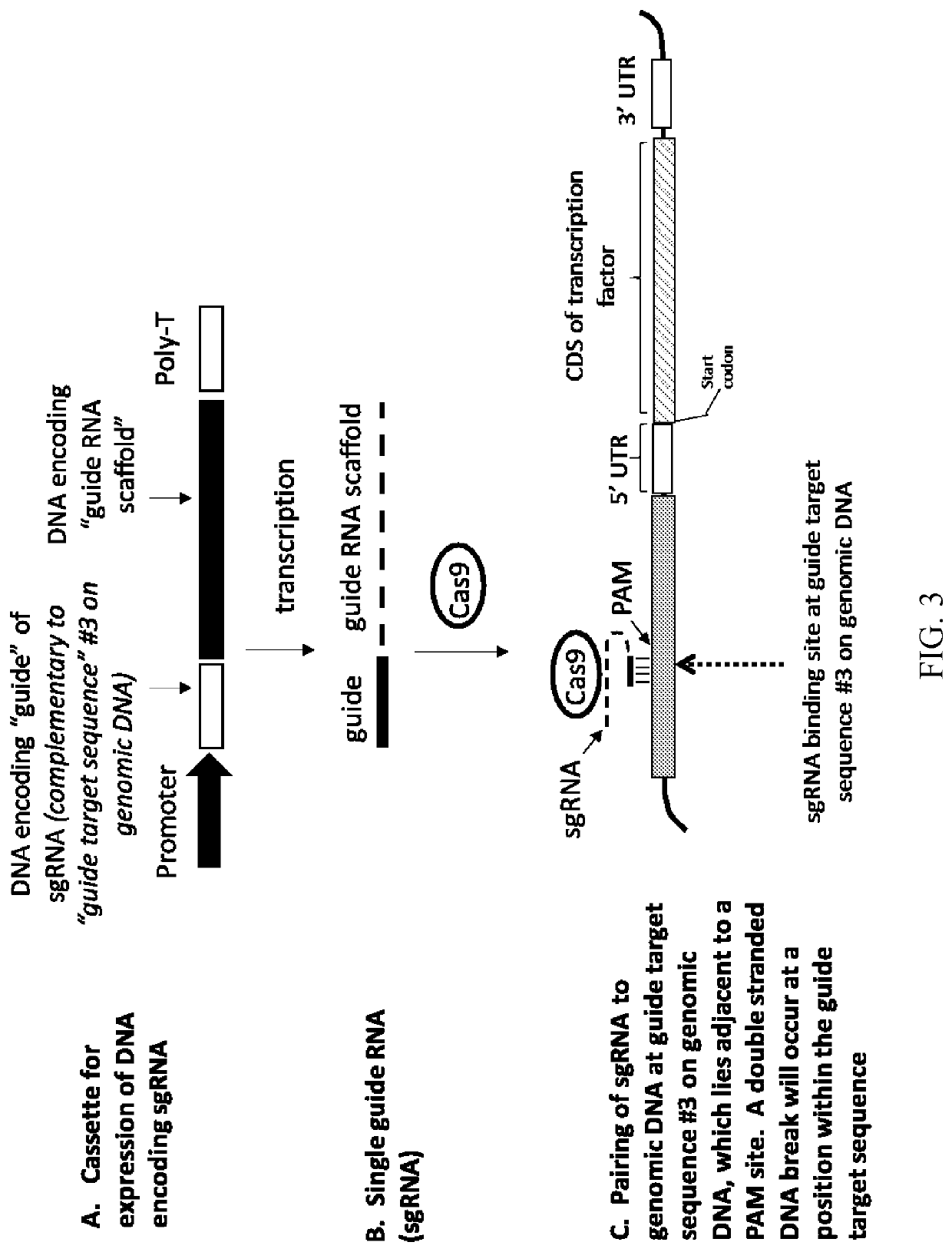Modified plants comprising a polynucleotide comprising a non-cognate promoter operably linked to a coding sequence that encodes a transcription factor
a technology of coding sequence and modified plant, which is applied in the direction of peptide sources, bio chemistry apparatus and processes, etc., can solve the problems of high cost, high cost, and high cost, and severely impaired private investment and innovation adoption.
- Summary
- Abstract
- Description
- Claims
- Application Information
AI Technical Summary
Benefits of technology
Problems solved by technology
Method used
Image
Examples
example 1
Expression Data Retrieval and Processing
[0289]Previously deposited Camelina gene expression datasets encompassing 162 RNA-sequencing libraries from the NCBI sequence read archive (website: / / www.ncbi.nlm.nih.gov / sra / docs / sradownload / ) were identified. Six different Camelina varieties (Suneson, DH55, CO-46, Joelle, Celine and MT-5) associated with thirteen different tissue types were represented.
[0290]Gene expression data, especially when collected across different experiments from different laboratories, needs to be normalized to remove potential biases introduced by various Next-generation sequencing platforms. Basic quality control was performed and ribosomal RNA (rRNA) sequences were removed by using SilvaDB. Tools like FastQC (website: / / www.bioinformatics.babraham.ac.uk / projects / fastqc / ) and Cutadapt (website: / / journal.embnet.org / index.php / embnetjournal / article / view / 200) were used to check the quality of RNA-seq data, with a modular set of analyses to identify any issues assoc...
example 2
Identification of Co-Expression Modules
[0292]The R package WGCNA was used to find co-expression modules (groups of genes that show similar expression patterns across multiple samples or conditions) using the correlation and adjacency matrices described in Example 1. “Guilt-by-association” principles (Wolfe et al., 2005, BMC Bioinf., 6, 227) assume that genes with similar expression patterns are likely to be functionally associated and may participate in the same or similar functions. The modules were identified based on hierarchical clustering yielding groups of genes with high topological overlap. Twenty-one modules were identified and these modules contained between 35 and 6637 genes, depending on the module (TABLE 3). The known transcription factors and acyl lipid related genes were identified within these co-expression modules. The number of total genes in each module, along with the number of TFs and acyl lipid related genes, are shown in TABLE 3. Each module has been assigned ...
example 3
Identification of Novel Regulators (TFs) to Increase Seed Yield and / or Oil Content
[0295]In order to further explore the association of the 211 transcription factors to the enriched biological processes within the brown module, the correlations of transcription factor genes to the top ten overrepresented pathways in the brown module were computed using a TF-module association network. TABLE 6 shows the network for the top 26 transcription factor genes. The top ten pathways that are overrepresented in the brown module, and their abbreviations in TABLE 6, are lipid metabolic process (Lipid MP), fatty acid metabolic process (FA MP), seed development (Seed dev), fatty acid biosynthetic process (FA BP), seed coat development (Seed coat dev), lipid biosynthetic process (Lipid BP), seed maturation (Seed mat), post regulation of metabolic process (Pos reg MP), lipid transport (Lipid transport), and carbohydrate metabolic processes (Carb MP). Each cell in TABLE 6 represents the TF pathway ass...
PUM
| Property | Measurement | Unit |
|---|---|---|
| pH | aaaaa | aaaaa |
| pH | aaaaa | aaaaa |
| pH | aaaaa | aaaaa |
Abstract
Description
Claims
Application Information
 Login to View More
Login to View More - R&D
- Intellectual Property
- Life Sciences
- Materials
- Tech Scout
- Unparalleled Data Quality
- Higher Quality Content
- 60% Fewer Hallucinations
Browse by: Latest US Patents, China's latest patents, Technical Efficacy Thesaurus, Application Domain, Technology Topic, Popular Technical Reports.
© 2025 PatSnap. All rights reserved.Legal|Privacy policy|Modern Slavery Act Transparency Statement|Sitemap|About US| Contact US: help@patsnap.com



